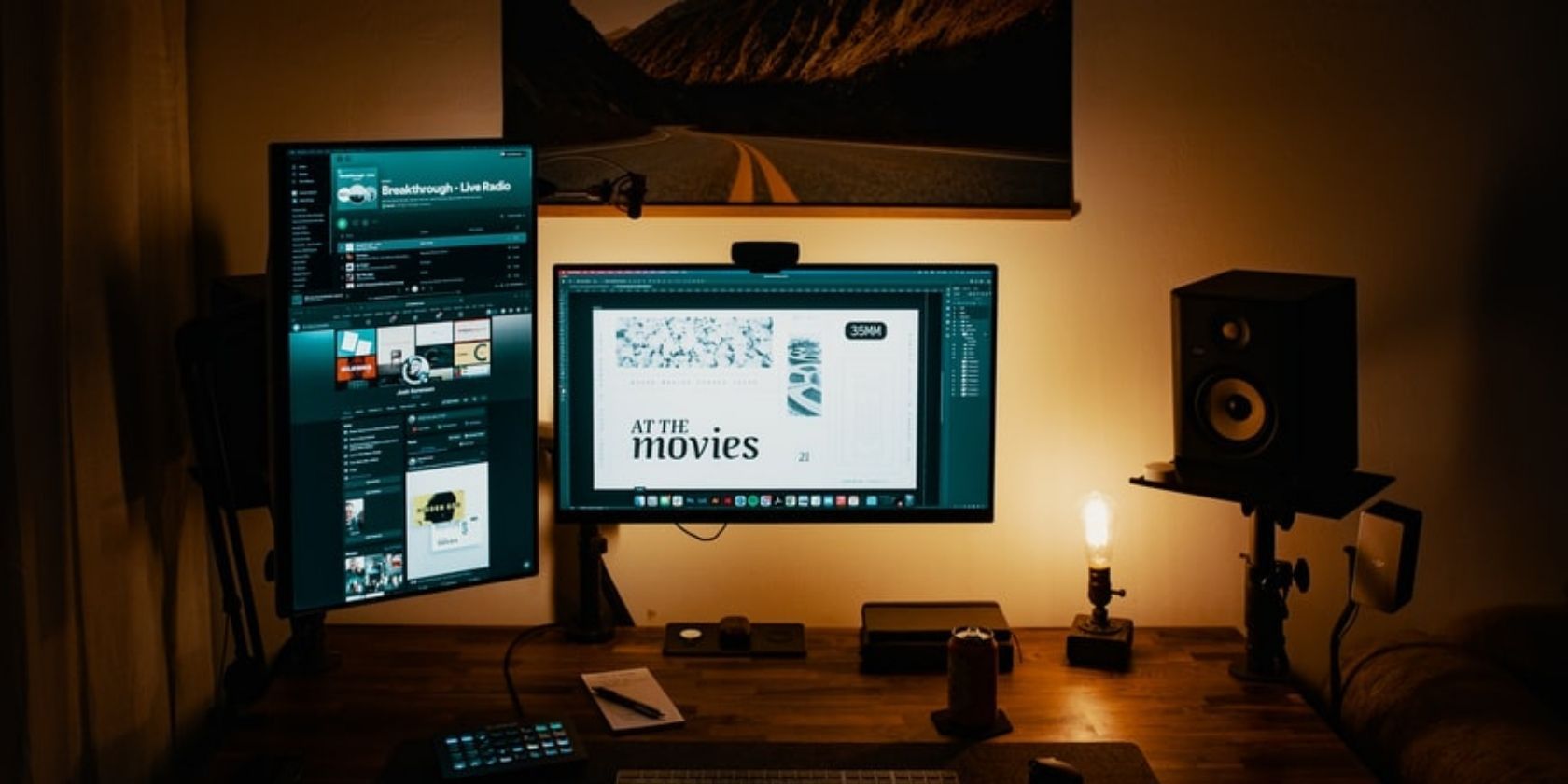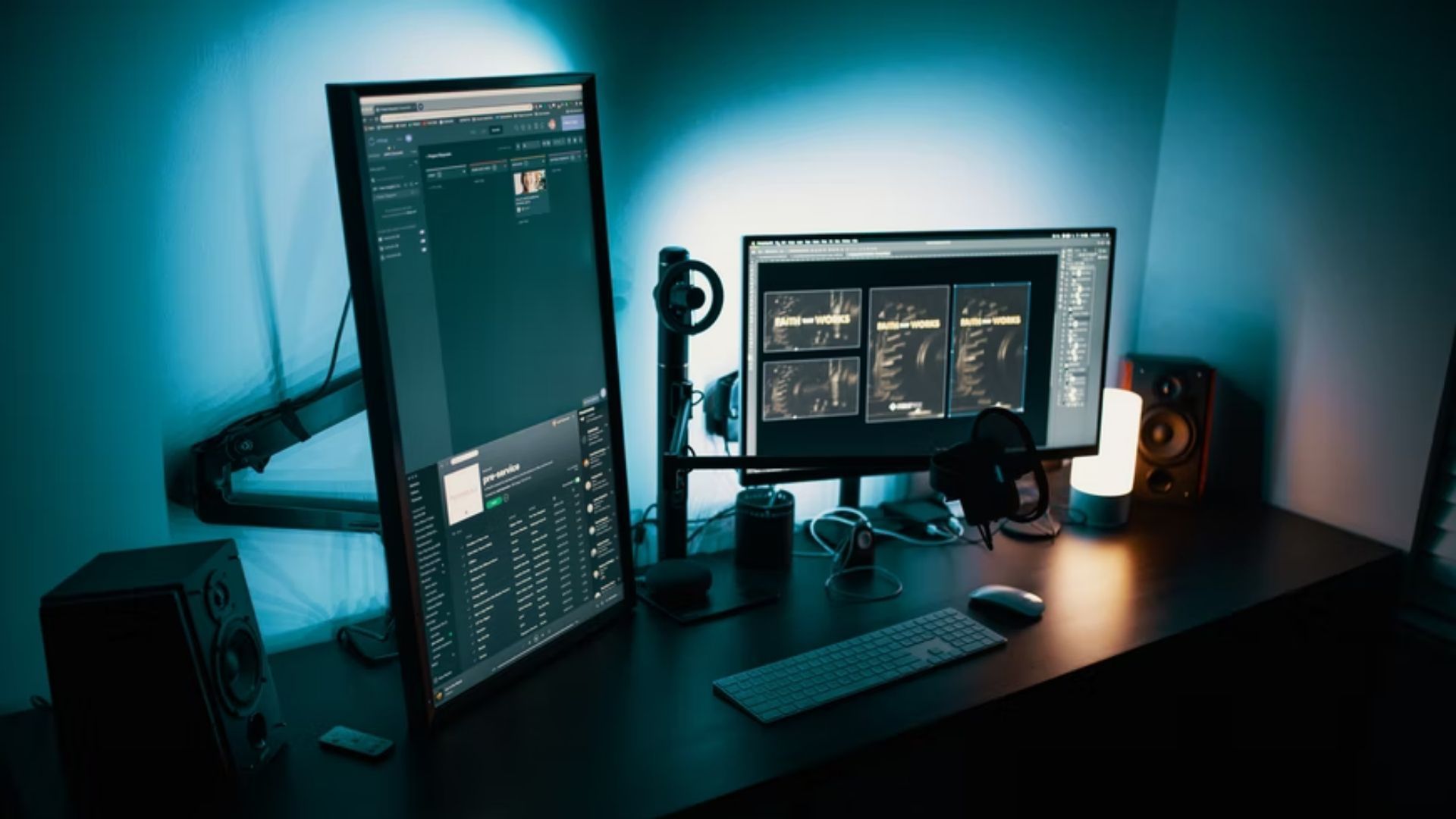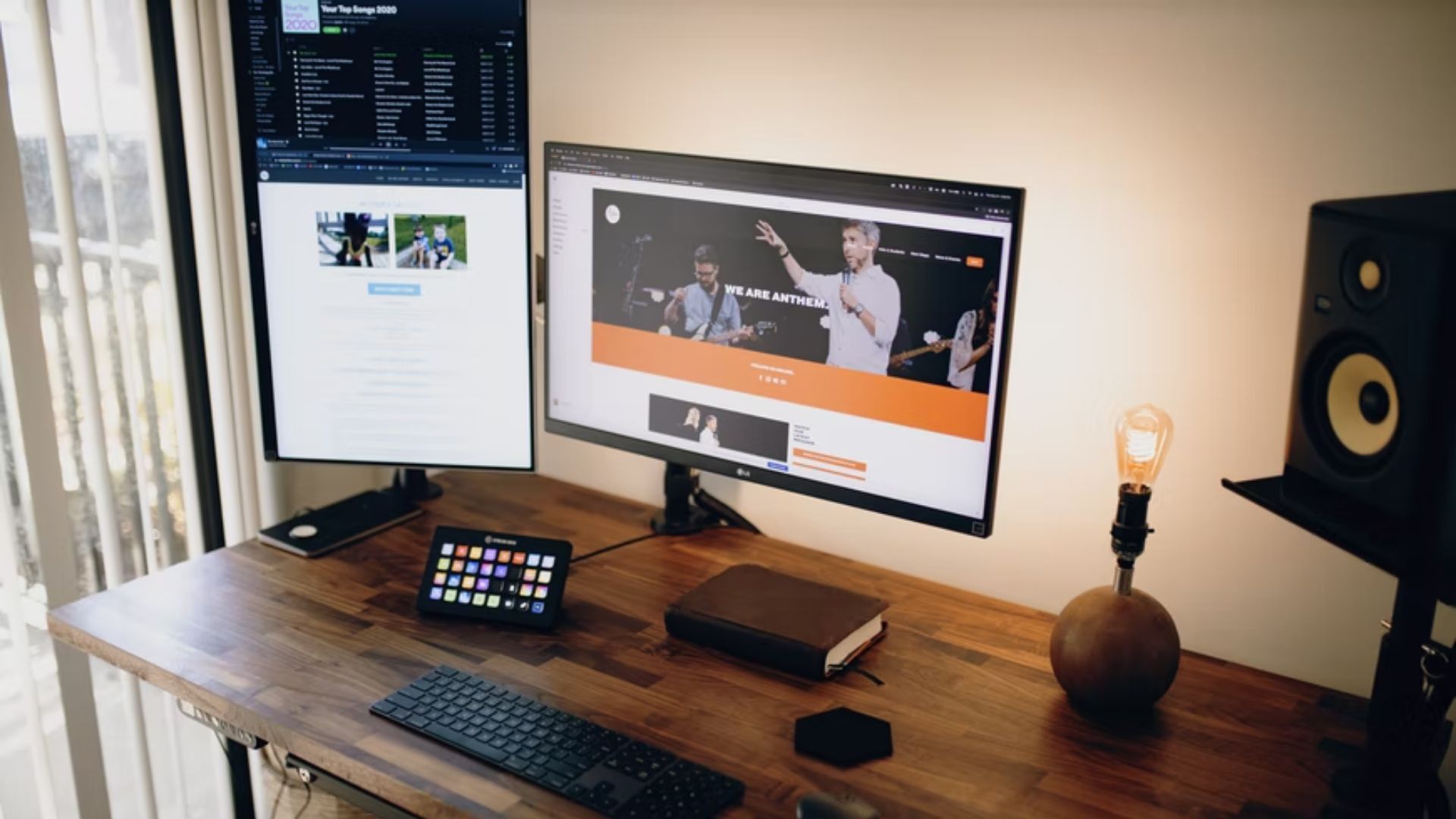If you have a desktop computer at home, you most likely have it paired with a horizontal monitor. In fact, many people don't even know that there's a vertical monitor option.Vertical monitors are aesthetically pleasing because they're different from what you traditionally see, but that's not the only reason to go vertical over horizontal. Let's take a look at which situations a vertical monitor is perfect for and why you might want to stick with a horizontal monitor instead.
What Is a Vertical Monitor?
If you do a quick internet search or look online for a vertical monitor, you'll see many images of horizontal monitors. That's because almost all monitors can be flipped horizontally or vertically; it just depends on what you prefer.
Because most people use monitors horizontally, that's how they are set up straight out of the package. That said, as long as your monitor is VESA compatible, you can use a mount to use it vertically instead.
From there, all you need to do is go to your computer's settings to change your monitor's display orientation from horizontal to vertical.
- On Windows, right-click an empty spot on your desktop background. Next, select Display Settings and scroll down until you see Display orientation. Using the dropdown menu, change the display orientation from Landscape to Vertical.
- On macOS, open System Preferences from the Apple menu. Simultaneously hold down the Cmd + Alt keys and select the Displays icon. On the right-hand side, you should see a dropdown menu under the title Rotation. To orient your display vertically, select the 90° option. As soon as you close out of System Preferences, your settings will save.
- On Linux, the process will vary slightly between distros, but the process is roughly as follows. Select the System Settings menu (or equivalent), head to Display, and under Rotation, select Clockwise or 90°.
Why Would You Use a Vertical Monitor?
Okay, so now you know that a vertical monitor is just a regular old horizontal monitor flipped. But what's the point? Who could actually benefit from using a vertical monitor?
The largest group of consumers who tend to favor the vertical orientation for monitors are coders or programmers. The code they typically work with is super long and consists of short lines that don't typically span more width than a vertical setup can handle.
Having a longer monitor means that you're able to read more code at once and not have to constantly scroll back and forth between one piece of code and another to figure out any bugs or write new functions that coordinate with existing functions.
People who code, however, are not the only ones who can benefit from a vertical monitor setup. Another large group of people who love to use vertical monitors is people who work a job that requires a lot of writing, reading, or editing. This includes, but is certainly not limited to, authors, editors, researchers, students, and even lawyers! Video game streamers also use vertical monitors to display their chat, so it's easier to read through during a stream.
Really, though, anyone who reads a lot of content online, even just for fun, could benefit from a vertical monitor. If you think about a magazine or a book, the text is always laid out in portrait orientation. It's a much more comfortable layout to read through.
Is There Any Reason to Avoid Vertical Monitors?
The only reason I'd recommend sticking with the classic horizontal orientation is if you do a lot of work that requires a landscape orientation. Graphic designers or photographers who edit their own pictures are just two examples of people who would probably struggle with a vertical monitor setup.
If you also play a lot of video games or stream a lot of video content from your desktop, it's going to look a lot better on a horizontal monitor.
Would You Go Vertical With Your Monitor?
Vertical monitors certainly make reading, writing, and coding easier, but having a purely vertical monitor setup might not be optimal. Many people use a dual or triple monitor setup with a vertical monitor to the side of a horizontal monitor.
Would you consider adding a vertical monitor to your setup with all the information you have now? All you need is a mount to rotate your monitor physically, and you're good to go! Even if you're not a programmer or a writer, there are still plenty of ways you can put a vertical monitor to good use.



